I went to the Baltimore Museum of Art in June. I meant to have a single piece on it, but got carried away and will write two. What follows covers the museum’s holdings in pre-1800 European art and its mosaics from Roman and Byzantine Antioch.
*
Once when I still subscribed to the New Yorker, maybe around 2015, I made an experiment in time travel. Using an interval of a decade, I went backwards through the archive, looking at ads. After flipping through the latest issue and seeing the watches, investment advisors and cancer treatment centers, I jumped back to 2005, then to 1995, and so on. By the time I got to the seventies I was in another world. Two things stood out especially: the ads for alcohol and the ads for Europe. Half a century ago, New Yorker subscribers drank more, and culturally speaking they lived more in the shadow of Europe, with its food and drink, its fine consumer goods, its art and its history. There were ads from national tourist boards and national airlines, ads for wool sweaters and tweed greatcoats and Danish glass and English china, ads for Volvos, Audis and Renaults, and of course ads for European alcohol, Scotches, gins, Campari, Dry Sack, Akvavit.1
I have mixed feelings about having been born too late for this. On one hand I like Europe, and living at a time when the United States is confident and self-absorbed, an exporter of culture and lifestyle that has overcome its old insecurities, can be a nuisance. For example I’d rather drink an espresso that’s a feeble imitation of what you get in Rome than a fair trade, single origin brew with notes of tangerine and cantaloupe. But maybe there’s also something to be said for the diminished role of Europe in the American imagination. When Europhilia was the default, how sincere was Europhilia, anyway? Were people just going through the motions? Today, when everyone feels comfortable being proud of American television shows, when you can be a digital nomad in the nicest neighborhood in Mexico City, when instead of mastering the art of French cooking you can become an aficionado of má la or umami, maybe the only people who take a special interest in Europe are the ones who really like it. In an age with no agreed-on expectations for cultural literacy, if someone tells you they’re reading Torquato Tasso, you can be sure they’re doing it not out of conformity, but from curiosity, enthusiasm, or even love.
No, that last part is a joke. I’m not sure a significant number of Americans ever read Tasso, but if they did that was long over by the nineteen-seventies. I haven’t read him, either, or Ariosto, or much of anything written in sixteenth century Italy, apart from The Prince and some of Vasari’s Lives. Still, I wonder if there wouldn’t have been more people looking at Anthony Van Dyck’s Rinaldo and Armida in the Baltimore Museum of Art, if I’d gone on a Thursday afternoon in 1974 instead of last month.
When Jacob Epstein bought the painting in 1927 the New York Times ran a front page, above the fold story—VAN DYCK SNATCHED FROM BRITISH HANDS BY AMERICAN BUYER, and illustrated the work on page 5. Epstein, born in 1864 in the part of the Russian Empire that is now Lithuania, had come to Baltimore at seventeen and founded a ‘notion’ business, the Baltimore Bargain House, which later became the American Wholesale Corporation. By the 1920s he was the kind of American who could travel to London and spend a quarter of a million dollars on a painting. He outbid (to quote the Times) “a group of British art lovers… raising a fund somewhat smaller… [who hoped] that the painting might be preserved and put in the British National Gallery.”


One reason I’m unsure if Tasso ever had many American readers is that when his popularity was at its height the United States didn’t exist yet. La Gerusalemme liberate, Tasso’s 1581 epic of the First Crusade, with its lovers Rinaldo and Armida, a Christian knight and a Saracen sorceress, was a favorite of readers, and the subject of dozens of operas and cantatas and countless paintings, for two-and-a-half centuries before it began to fall out of fashion.
Parts of Jerusalem Delivered were published in England in a Latin translation in 1584; Queen Elizabeth is said to have memorized passages, and Edmund Spenser borrowed heavily from Tasso in his 1590 Faerie Queen. A partial English translation by Richard Carew came out in 1594, and a full version by Edward Fairfax followed in 1600.
The durability of Tasso-mania was such that several decades later Sir Endymion Porter, a courtier of Charles I acting on the king’s behalf, commissioned van Dyck to make a painting based on Jerusalem Delivered. In 1623, Charles, at the time still the Prince of Wales, had traveled to Madrid in the hopes of marrying Infanta María Ana, sister of King Philip IV of Spain (María Ana is not to be confused with her older sister Ana Mauricia, whose portrait is discussed below). While there he had seen the great royal collection, with its many works by Titian and Raphael. Porter had been among the courtiers on that trip, so he had watched Charles develop his taste in painting. As Porter had already met van Dyck, in 1621, the idea for the commission must have suggested itself. The resulting work, which van Dyck completed in his Antwerp studio in 1629, is in the manner of the poesie, a series of six mythological paintings that Titian made in the 1550s for Philip II of Spain. Three of these were to have been included in the dowry of María Ana, but when the marriage negotiations fell through the paintings remained in Madrid; a fourth, Perseus and Andromeda, was at the time in the possession of van Dyck himself.2
Given this background it is unsurprising that Rinaldo and Armida is, to quote the art historian Aneta Georgievska-Shine, “one of the most Titianesque paintings ever to enter England.” The success of the commission was such that it led to one of the most celebrated collaborations of patron and painter in the history of art. Van Dyck came to London in 1632 to be principall Paynter in Ordinary to their Majesties. He stayed for most of the rest of his life, creating the body of portraits that give us our image of the elegant, doomed, King Charles.
As for Rinaldo and Armida, Epstein was right to splurge. It’s big, about seven feet by seven feet, and even if you don’t know what’s going on the colors and action make an impressive effect. I can’t find a paint analysis, but it’s likely that no expense was spared, which means the blues are ultramarine, made from ground lapis lazuli. This was the dearest of pigments both for the richness of the blue and because it was mined in far-off Afghanistan. Armida, at the center of the painting, in a blue cloak half covered by a billowing red robe, finds herself incapable of fulfilling her plan to kill the sleeping Rinaldo. Instead, having fallen in love with him—what else could happen in a scene where the principal figures are surrounded by cupids?—she places a garland of flowers on his shoulder.
But when she looked on his Face awhile,
And saw, how sweet he breath’d, how still he lay,
How fair his eyes, though closed, seem’d to smile,
At first she stay’d, astound with great Dismay,
Then sat her down (so Love can Art beguile)
And, as she sat and look’d, fled fast away
Her Wrath, that on his forehead gaz’d the Maid,
As in the stream Narcissus toting lay’d3
As part of her plan to kill Rinaldo, Armida had sent a siren—or to be more precise, a false siren, a sprite—to lull him to sleep with her beautiful voice. This creature can be seen at lower right. With one elbow on dry land and holding a sheet of music, she splashes out of her watery element, giving us a tantalizing look at her scaly lower half. Other details catch the eye: the flash of light on Rinaldo’s chest plate, flowers in the foreground, a blue mountain in the distance.
It’s easy to see why the painting attracted so much attention in 1927, even if no one read Tasso then. Not just any van Dyck snatched from British hands, but a large and dramatic one that had belonged to a king. It’s also easy to see why the work is ignored today, in an America that, far from looking up to the Old World, or daring itself to summon the courage to challenge European hegemony, barely acknowledges Europe’s existence. There are superb van Dycks in Washington, too, portraits of Genoese aristocrats he made shortly before Rinaldo and Armida. I’ve stood alone in front of them, amused by their fate, these magnificent likenesses of the Marchesa Balbi and the Marchesa Cattaneo, hanging in their under-visted gallery in the capital city of the United States of America. The country has moved on from these paintings, but if you want them they’re still there.
*
There’s more to the European Collection of the Baltimore Museum of Art than the one van Dyck. There are the other paintings from the Epstein legacy, including portraits by Titian, Raphael, Hals and Goya. And there’s the Mary Frick Jacobs Collection, Mary Frick Jacobs being the WASP to Epstein’s Litvak. Not a relation of Henry Clay Frick, or at least not a close relation, she was born into a prominent Baltimore family in 1851, and in 1872 married Robert Garrett, oldest son of the president of the first railroad in the United States, the Baltimore and Ohio Railroad. Her husband followed in the footsteps of his father, but then went mad, and died relatively young, in 1896. It had been a childless marriage. A few years later, Mary, who must have been one of the richest women in the country, married her physician. By the time of her death in 1936 she had formed a substantial art collection, which she left to the museum. Jacobs’s big Botticelli tondo is one of the first works you see when you enter the European galleries, and in the first photo above, the portrait to the left of the doorway is her van Dyck, the 1637 Marchioness of Worcester. There are other big names as well, but I will ignore them, and instead write about two minor artists.
A book on Spanish painting of the sixteenth and seventeenth centuries might have a chapter each on El Greco, Zurbarán, Murillo and Ribera, and two or three chapters on Velázquez, but what about someone like Juan Pantoja de la Cruz, court portraitist during the reigns of Philip II and Philip III? Perhaps he merits a paragraph or two, and a small illustration in black and white. The Prado has sixteen of his works, but only three are on display, and anyway who goes to the Prado to see Juan Pantoja de la Cruz? Maybe no one, but in spite of the fact that a minute is made of the same sixty seconds on both sides of the Atlantic, Baltimore museum time is different from Madrid museum time. In Baltimore The Garden of Earthly Delights is not waiting for you in the next gallery; nor is Las Meninas or the Third of May or even the Recovery of Bahía. There’s no rush, so why not spend a few of those sixty-second minutes with Pantoja’s 1607 Infanta Ana Mauricia. You’re unlikely to regret it. The Infanta was six or seven at the time the painting was made. It is melancholy to look at portraits of royal children, if it turns out they died soon after they were painted, but Ana Mauricia had a long life ahead of her. At eleven she was betrothed to another eleven-year-old, Louis XIII of France, already king thanks to François Ravaillac, the fanatical Catholic who assassinated his father Henri IV in 1610. When they were fifteen the young couple were married by proxy at Burgos, with the Duke of Lerma standing in for Louis; then Ana Mauricia crossed the border into her new kingdom, where she would be known as Anne d’Autriche. At thirty-seven, after a series of miscarriages, she gave birth to an heir, the future Louis XIV; when her husband died a few years later she became queen regent, and, alongside her first minister, Cardinal Mazarin, played a role in state affairs until she retired in 1661 to the Val-de-Grâce, the convent she had had built on the outskirts of Paris.
All this was in store for Ana Mauricia when she posed for Pantoja. And maybe she looks ready, or at least those dark eyes are thoughtful, and she is at ease in her splendid costume, to the extent that it is possible to be at ease in a pleated ruff and a tight-fitting, embroidered dress that repeats the ruff on a small scale at each wrist. Her pearls and gemstones shine, and, as if to draw attention to it, she lightly holds the jeweled cross that hangs from the neck obscured by the ruff.
So should Pantoja be better known? Maybe not. He was far from the only artist of his time to do justice to pearls or a starched ruff, and it’s easy to imagine a roomful of Pantojas leaving a different and maybe lesser impression than just one. The place to find out is Schloss Ambras in Innsbruck, Austria, where there are seven Pantojas on display, including one of a slightly younger Ana Mauricia in the company of a pet tamarin. Searching online, I turned up two more American Pantojas, one at the Fogg at Harvard, a full-length portrait of Ana’s father Philip III in armor, pale and haughty, and a similarly sized work of her mother, Margaret of Austria, at the Museum of Fine Arts in Houston. I wonder if anyone at these museums has thought of a small exhibition to bring this family group together, four-plus centuries on. If not, someone should.
*
I like self-consciously old-fashioned paintings. One of my favorite works at the Met is Hendrick ter Brugghen’s Crucifixion with the Virgin and Saint John, from the 1620s. Ter Brugghen is known to posterity as an Utrecht Caravaggist—that is, he was one of several painters from Utrecht who lived in Rome, imitated the style of Caravaggio, and eventually returned to his native city. But for this work, painted after his years abroad, he looked not to contemporary Italy but to Late Gothic Northern Europe. The glowing sky suggests the sun has just disappeared over the horizon, but also seems a reference to the gold-background paintings of the fifteenth century. In the foreground the greenish tint to Christ’s flesh, the blood seeping out of his wounds, the contorted arms, and the bowed head all recall depictions from the early 1500s, when painters and sculptors alike emphasized the physical suffering of the Passion as at no other time in the history of Christianity. But in spite of the influence, ter Brugghen’s painting would look tame next to the real thing, for example if hung beside a crucifixion by Matthias Grünewald. It’s an homage rather than an imitation.
I mention ter Bruggen’s Crucifixion because in Baltimore I discovered another ‘old-fashioned’ painter, Marguerite Gérard. Gérard, from a perfume manufacturing family in the south of France, was the sister-in-law and protégé of the Rococo painter Jean-Honoré Fragonard. She was also an admirer of the genre scenes of the Dutch Golden Age. Today that would mean Vermeer, but in Gérard’s time Vermeer was still a century away from rediscovery; her influences were ter Borch, Metsu and Dou, painters known for small, finely detailed interior scenes of domestic life. I’ve never paid attention the Gérard at the Met, a portrait of the wife of the statesman Talleyrand, but the two paintings in Baltimore jumped out at me. Both are group portraits of unidentified families. One is a late 1780s work from the Mary Frick Jacobs bequest; the other, from the 1810s, was given to the museum by Billy Baldwin—not the actor, but an interior decorator who in his Times obituary was described as “the first influential decorator who was totally American in his outlook.”
The earlier work is the less interesting of the two. An architect is seated in an upholstered chair at right; he has a daughter in his lap and is at work on a plan of some sort, which hangs over a small table. On the other side of the table the architect’s wife is seated in a second chair, her arm around a son, who is at work on a sketch. The four of them are relaxed, even chic. But maybe also a bit vapid, in their ancien régime casual.
It’s the second Gérard painting, the one the museum got from the interior designer, that is the star. At center is another couple. They stand together, hands almost clasped, in front of a chair and a table. The wife looks out at the viewer; her husband glances down at their son, who is at lower left, restraining a dog. The wife wears a two-layered dress with an exterior of dark fabric that only partially covers the pink satin hanging down to the tiled floor—satin that crumples and shines, just as it does in the paintings of ter Borch (for example in one at the Met known as Curiosity). Her fine clothes and jewels, however, do not convey the nonchalance of the architect’s family. These are serious people who know what they are about. They may be happy, but they are not lighthearted. One wonders what lay in store for them as the nineteenth century wore on. (The corresponding question for the architect’s family is darker: did they survive the whirlwind that was just over the horizon when they sat for Gérard?)
*
After the World War I the ancient city of Antioch was part of the First Syrian Republic, one of the successor states of the Ottoman Empire. In 1932 Princeton University was granted permission by the Syrian Antiquities Service to conduct excavations there, on the understanding that what was found would be divided between the local archaeological museum and the many institutions supporting the initiative—among them the Louvre, the Baltimore Museum of Art and the Worcester Art Museum. The dig lasted until 1939, when Antioch became part of Turkey, which had stricter antiquities laws than Syria. Over seven years the team found hundreds of mosaics but not much else; hopes of uncovering great monuments and palaces were not realized. The largest mosaic brought to the United States, a series of hunting scenes from a suburban villa that dates to early Byzantine times, is in Worcester. Baltimore ended up with thirty-four Late Roman and Byzantine mosaics, the majority of which are on display in the Antioch Court, a sunlit, cloister-like space at the center of the museum. I conclude with a selection.
To come next month: Baltimore’s Matisses and other works from the collection of Claribel and Etta Cone, as well as Americana, including the paintings of Baltimore native Joshua Johnson.
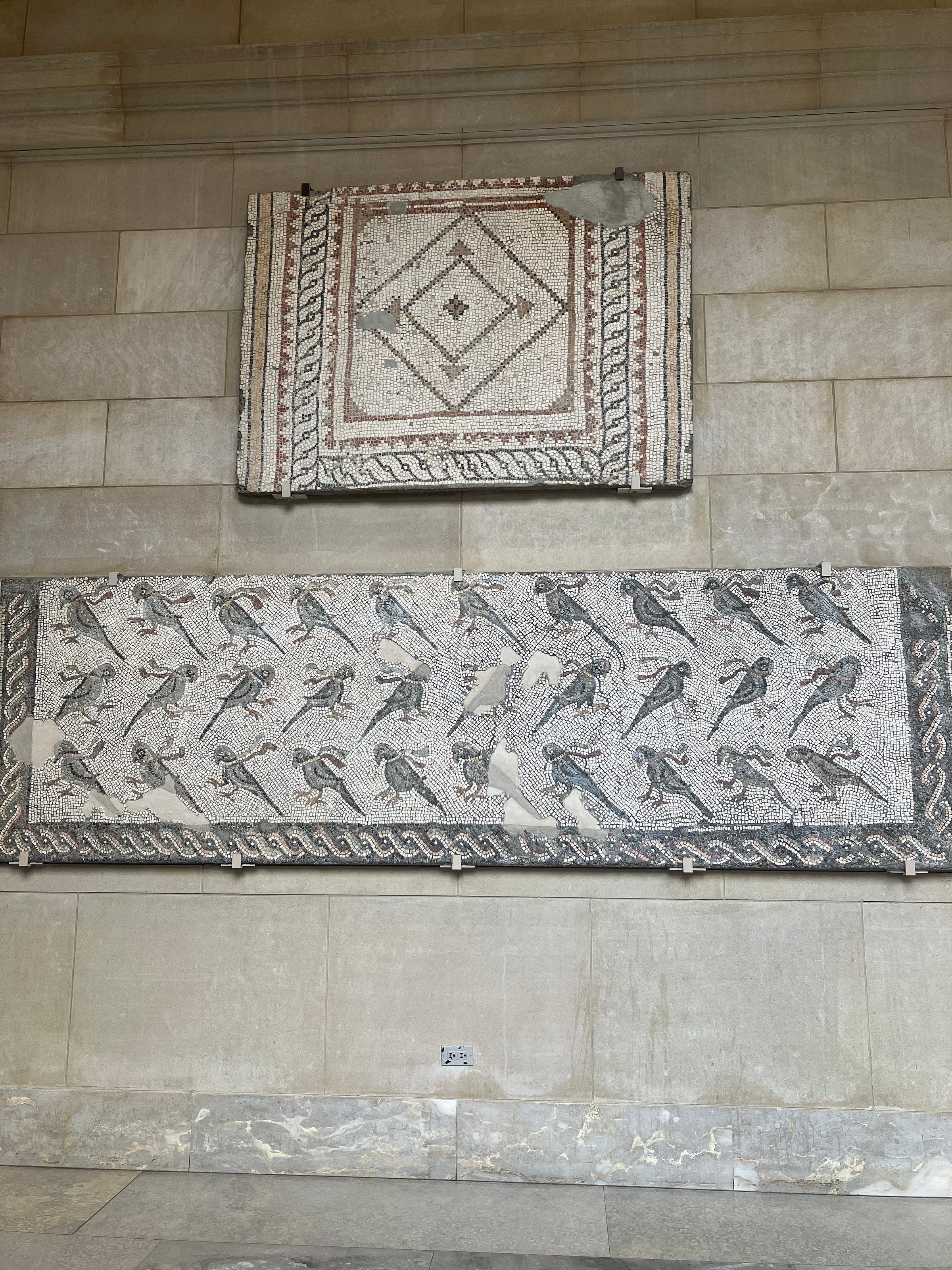
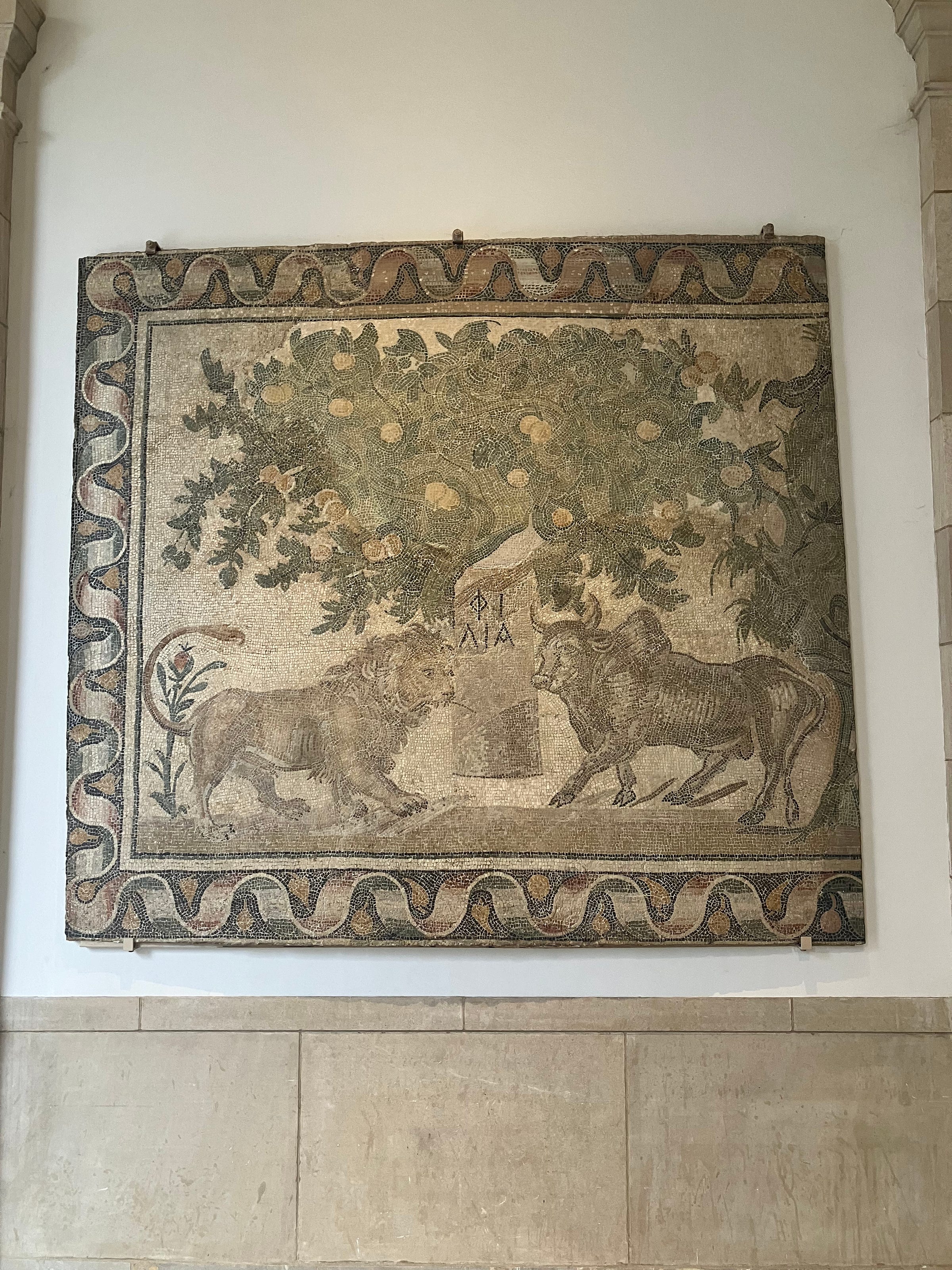
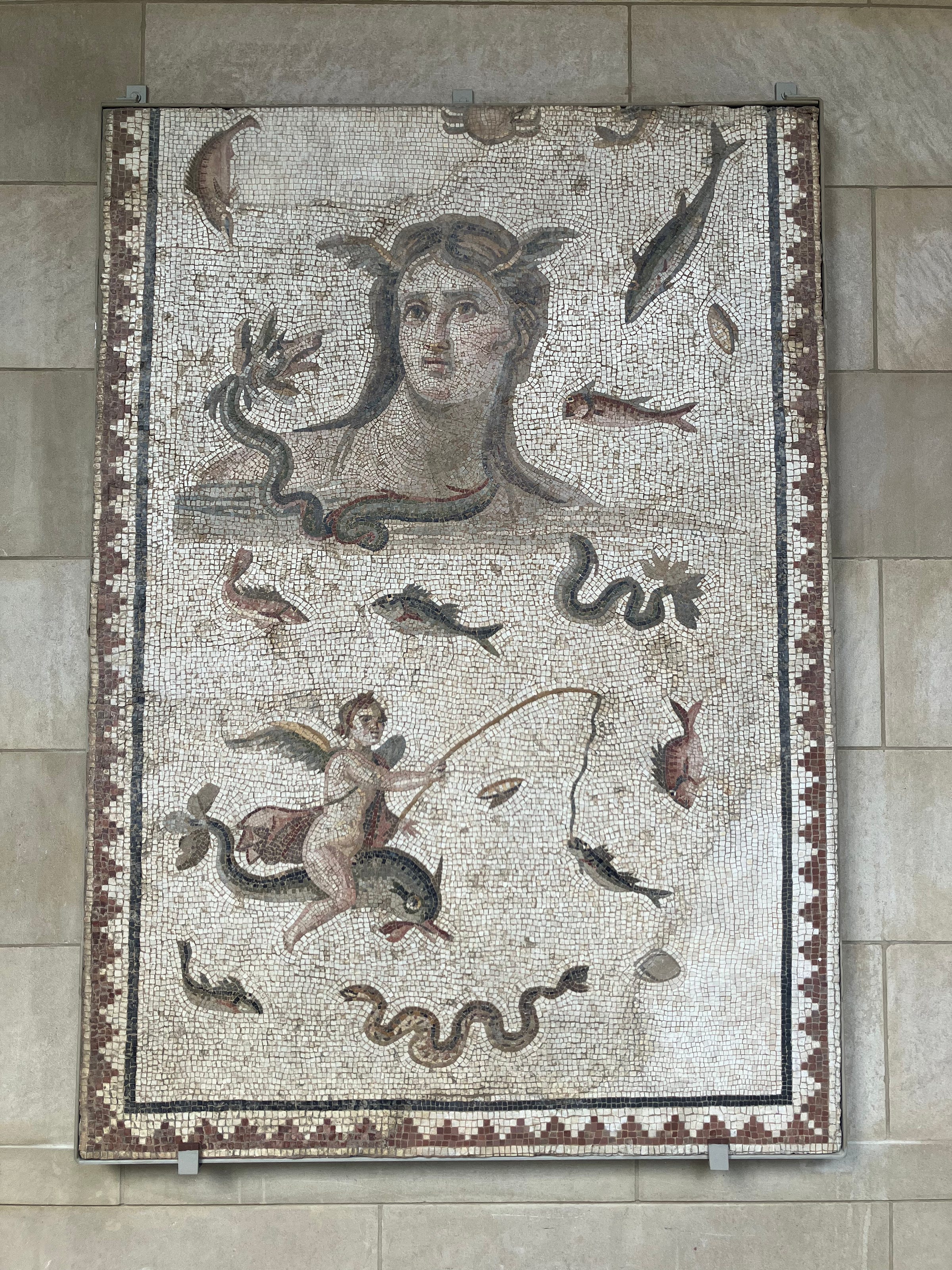

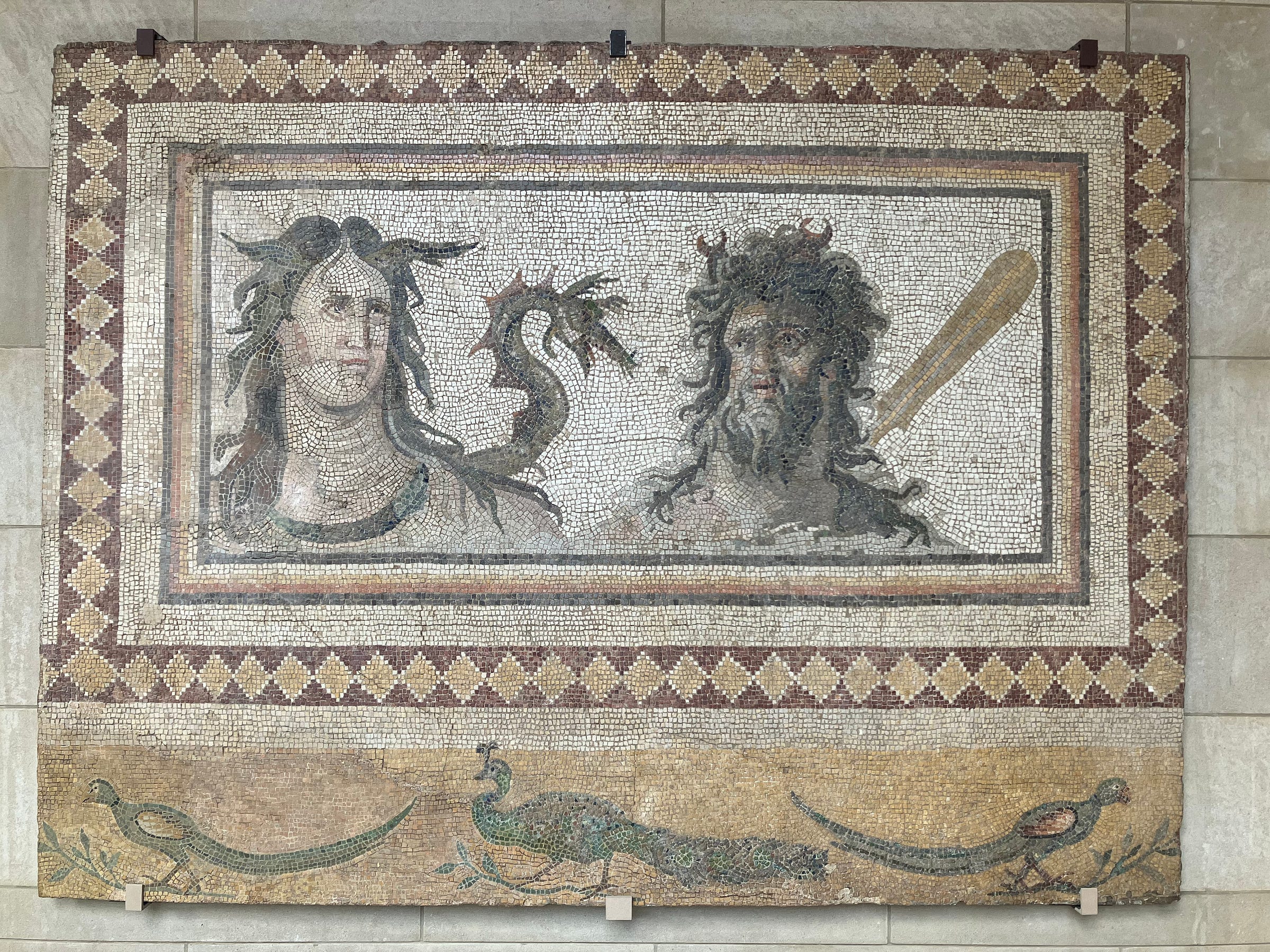
Incidentally, the New Yorker barely has any ads these days.
Perseus and Andromeda was the first of the poesie to leave Spain. Philip II may have given it to his favorite, Antonio Pérez, or he may have given it to the Milan sculptor Leone Lioni. Either way, by the early 1600s the painting was in the hands of Lioni’s descendants, who sold it to van Dyck around 1623. It remained in van Dyck’s possession until his death in 1641. Today it is in the Wallace Collection. In the long run all but one of the poesie left Spain. Venus and Adonis is at the Prado.
From a 1749 edition the Fairfax translation of Jerusalem Delivered, Book 14, Stanza 46 (p. 331). A glossary at the back clarifies that ‘toting’ means ‘looking.’




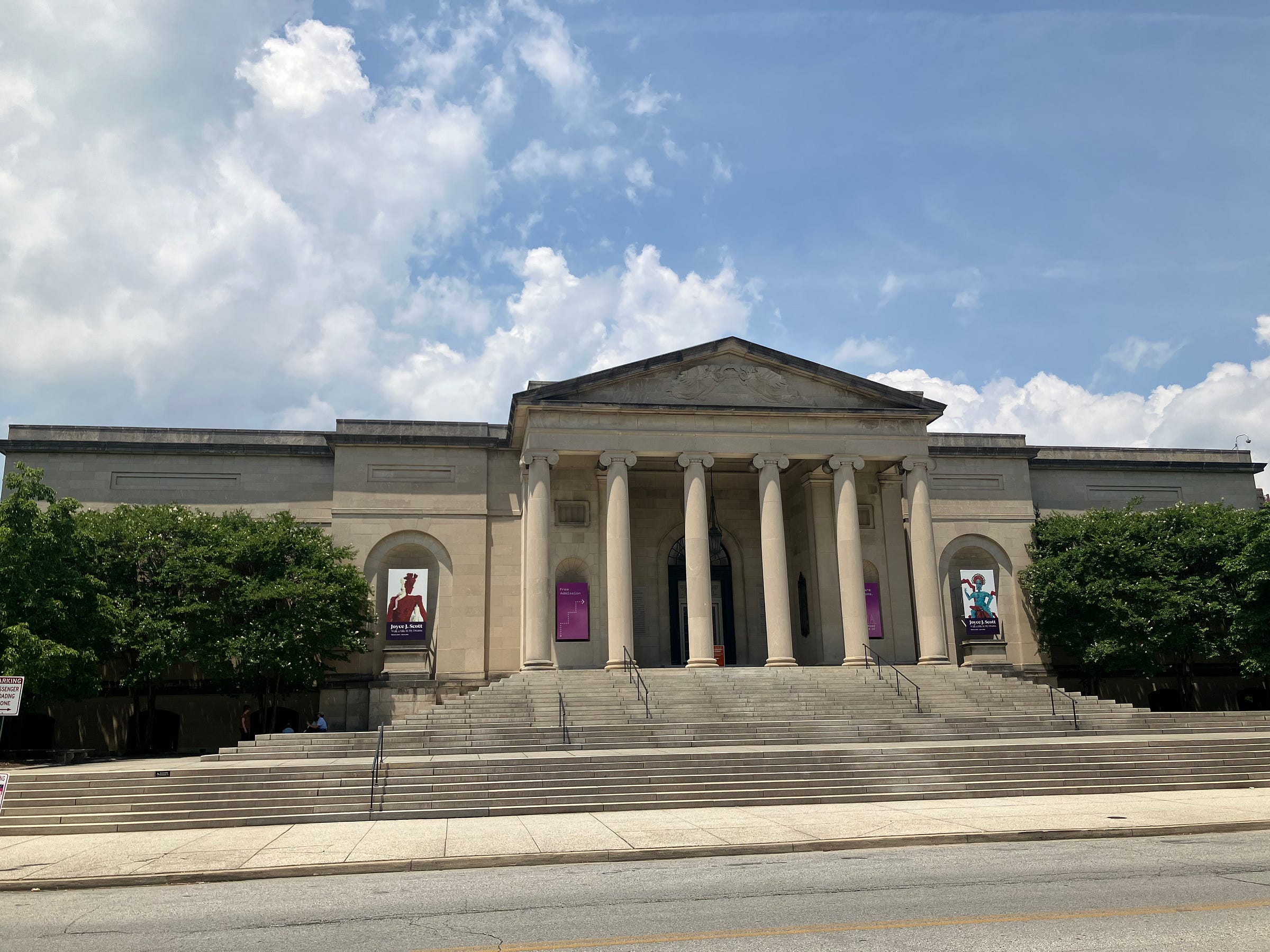
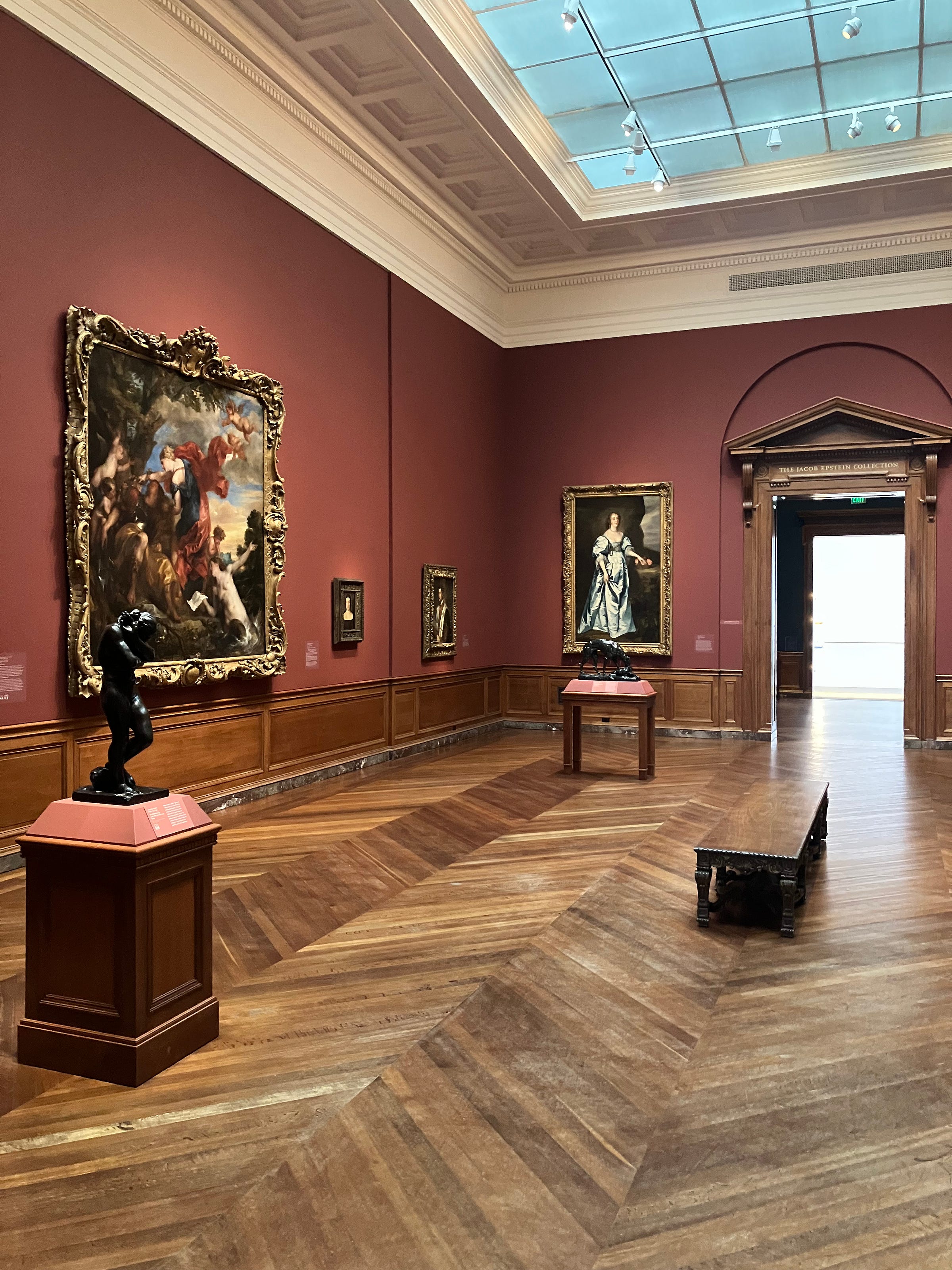
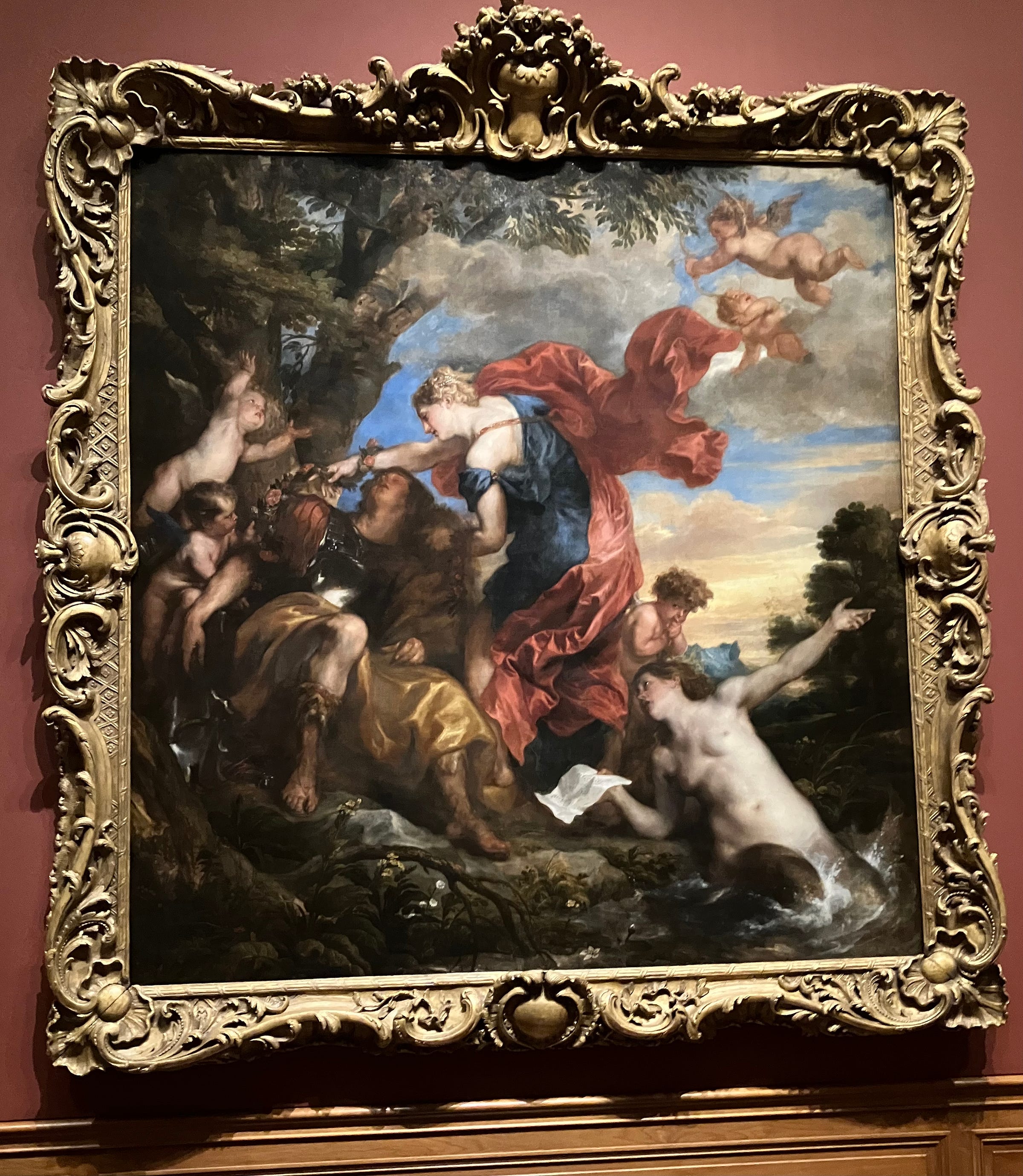
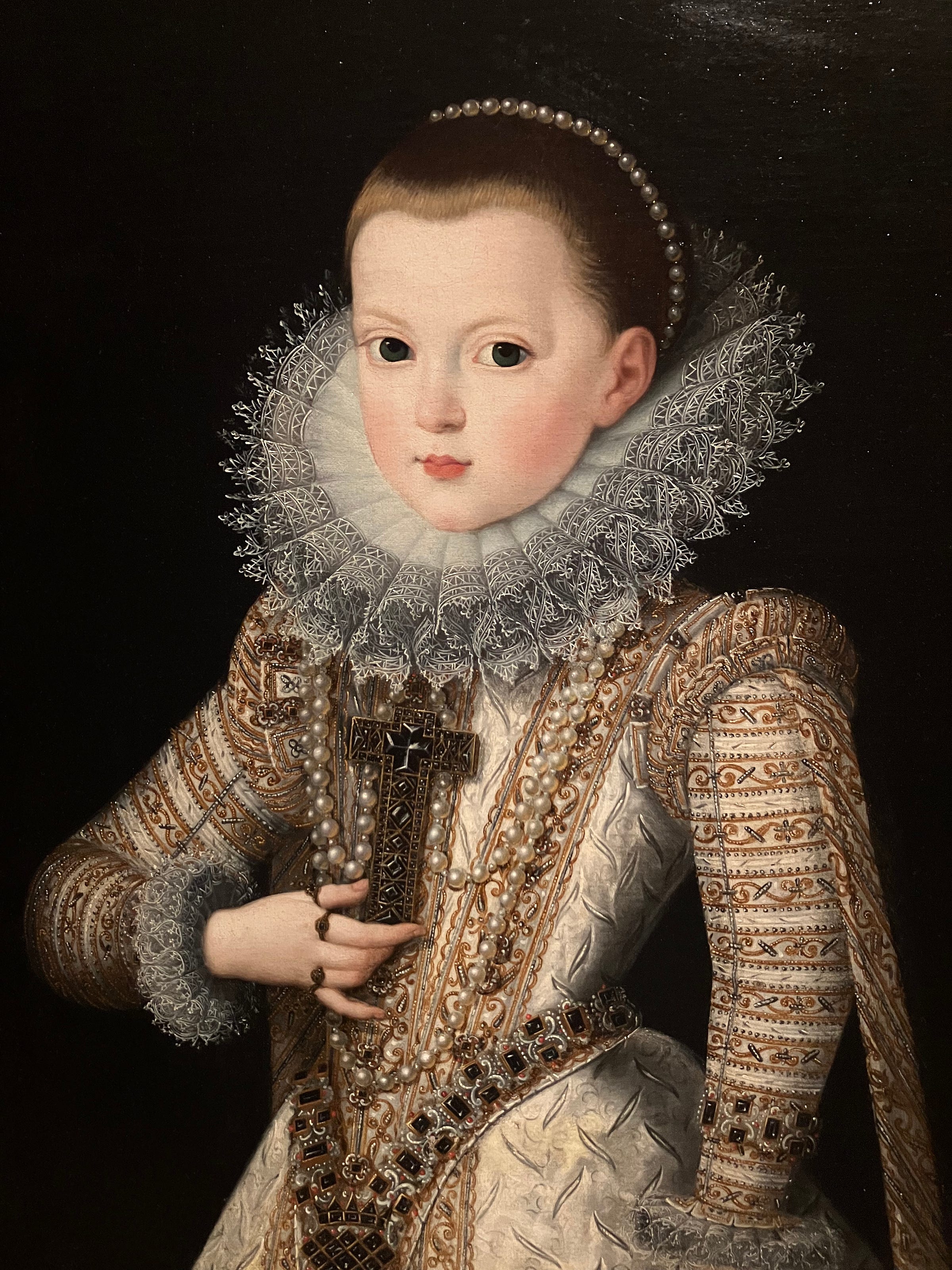
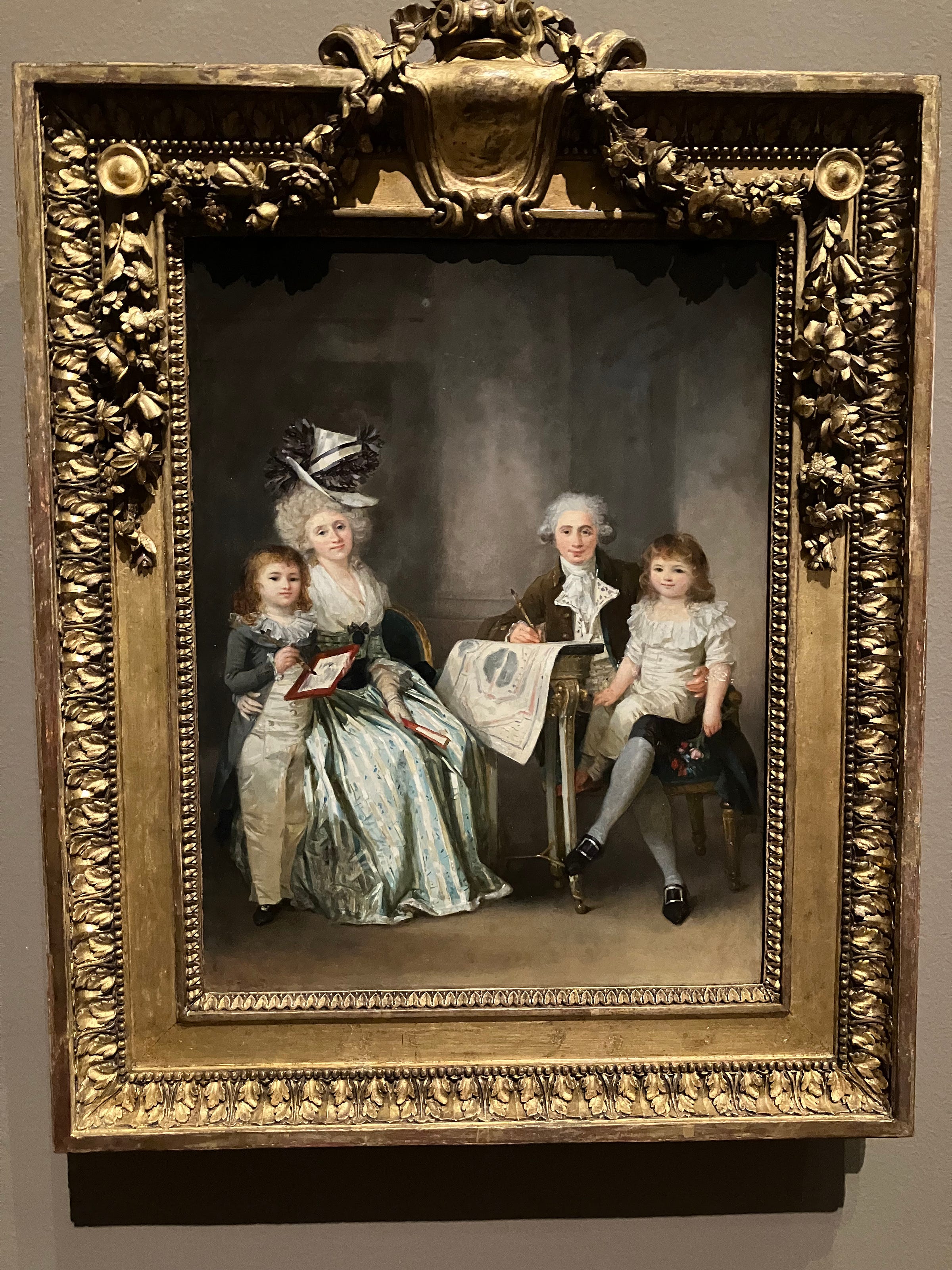

The resemblance to Grünewald is striking.
A great post, as usual! Sometime in the 70s Barbara Reynolds did a really excellent translation of Orlando Furioso in the style of Pope. I don't know why it isn't more popular with the sort of person who reads Penguin Classics, it is like a cross between Ovid and Don Quixote. (I think that the serious reason is that the 19th century cult of Dante wrecked the formerly high reputation of Ariosto and Tasso at least in France and England / the US.)
"Of ladies, cavaliers, of love and war,
Of courtesies and of brave deeds I sing,
In times of high endeavour when the Moor
Had crossed the sea from Africa to bring
Great harm to France, when Agramante swore
In wrath, being now the youthful Moorish king,
To avenge Troiano, who was lately slain,
Upon the Roman Emperor Charlemagne."